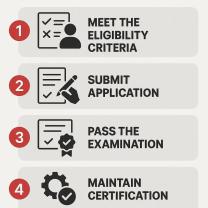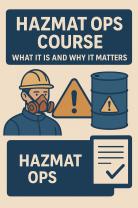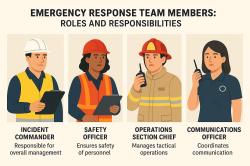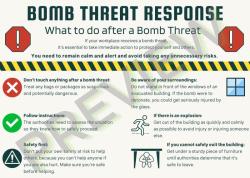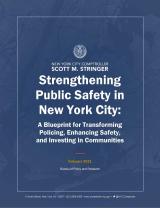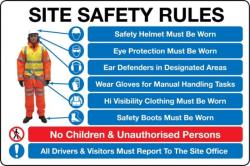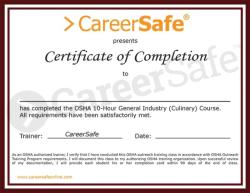What is a site specific safety plan?
A Site-Specific Safety Plan (SSSP) is a comprehensive document that outlines tailored safety guidelines and procedures for a specific work site or project. The primary purpose of an SSSP is to identify and mitigate potential health and safety risks associated with the activities taking place at a particular location. This plan is a critical component of overall risk management and helps ensure the well-being of workers, visitors, and the public.
Key components of a Site-Specific Safety Plan typically include:
Project Overview:
- A brief description of the project or work activities being conducted at the site.
- Identification of key personnel, including project managers, supervisors, and safety officers.
Site Details:
- Specific location and address of the work site.
- Description of the site layout, including access points, work areas, and emergency exits.
Hazard Identification:
- Assessment of potential hazards associated with the site and the work activities.
- Identification of environmental factors that could impact safety.
Risk Assessment:
- Evaluation of the level of risk associated with each identified hazard.
- Prioritization of risks based on severity and likelihood.
Control Measures:
- Implementation of control measures to eliminate or reduce identified hazards.
- Use of engineering controls, administrative controls, and personal protective equipment (PPE) to mitigate risks.
Emergency Procedures:
- Clear and concise emergency procedures for various scenarios (e.g., fire, chemical spills, medical emergencies).
- Designation of emergency assembly points and communication methods.
Training and Competency:
- Identification of required training for workers.
- Documentation of workers' competencies and certifications.
Communication Plan:
- Establishing a communication plan for disseminating safety information to workers.
- Communication channels for emergencies or changes to safety procedures.
Work Permits:
- Requirements for obtaining work permits for specific tasks or activities.
- Authorization and approval processes for work permits.
Incident Reporting and Investigation:
- Procedures for reporting incidents, accidents, or near misses.
- Protocol for investigating incidents and implementing corrective actions.
Personal Protective Equipment (PPE):
- Specification of required PPE for various tasks.
- Guidelines for proper use, maintenance, and storage of PPE.
Environmental Considerations:
- Measures to minimize environmental impact, including waste disposal and pollution prevention.
- Compliance with environmental regulations and standards.
Contractor Management:
- Guidelines for managing contractors and subcontractors on the site.
- Verification of contractor qualifications and adherence to safety standards.
Site Security:
- Measures to ensure site security and prevent unauthorized access.
- Procedures for handling visitors and deliveries.
Review and Updates:
- Regular review and revision of the Site-Specific Safety Plan to address changing conditions.
- Involvement of workers in the ongoing improvement of safety procedures.
Site-Specific Safety Plans are often required by regulatory authorities, and they play a crucial role in promoting a safety culture on construction sites, industrial facilities, and other work environments. The plan serves as a living document that evolves throughout the duration of the project, adapting to changes in scope, conditions, or regulations. It is a collaborative effort that involves input from various stakeholders, including safety officers, project managers, and workers.
Definition and purpose of a site-specific safety plan in construction
A site-specific safety plan (SSSP) is a crucial document in construction projects. It's essentially a roadmap for ensuring the health and safety of everyone involved at a specific construction site. Here's a breakdown of its definition and purpose:
Definition:
- A written plan outlining the hazards, procedures, and protocols specific to a particular construction project and site.
- Tailored to address the unique risks and challenges posed by the project's activities, materials, equipment, and environment.
- Serves as a living document that needs to be continuously reviewed and updated throughout the project duration as conditions and activities change.
Purpose:
- Prevent accidents and injuries: By identifying and mitigating potential hazards, the SSSP aims to keep workers, visitors, and anyone near the site safe from harm.
- Compliance with regulations: It ensures adherence to relevant safety regulations and standards set by government agencies like OSHA.
- Improve communication and awareness: Clearly communicates safety procedures and protocols to all personnel on-site, ensuring everyone understands their roles and responsibilities in maintaining a safe environment.
- Accident response and preparedness: Outlines emergency response procedures, contact information, and evacuation plans in case of accidents or incidents.
- Boost project efficiency and productivity: A safe work environment minimizes disruptions and delays caused by accidents and injuries, ultimately leading to smoother project execution and completion.
Key Components of an SSSP:
- Project description and scope: Details the nature of the project, activities involved, and estimated duration.
- Hazard identification and risk assessment: Identifies potential safety hazards associated with the project and evaluates their severity and likelihood of occurrence.
- Safe work practices and procedures: Outlines specific procedures for each activity, emphasizing safe execution and appropriate use of equipment and materials.
- Personal protective equipment (PPE) requirements: Specifies the required PPE for different tasks and activities based on the identified hazards.
- Emergency response plan: Details procedures for handling various emergencies, including fire, medical emergencies, and equipment failures.
- Communication plan: Establishes clear communication channels for reporting safety concerns, hazards, and incidents.
- Training and competency verification: Ensures all personnel receive necessary training on safety procedures and have the skills and knowledge to work safely.
Remember, a well-developed and implemented SSSP is crucial for creating a safe and productive work environment in construction. It's everyone's responsibility to understand, follow, and contribute to its ongoing effectiveness.
I hope this clarifies the definition and purpose of a site-specific safety plan in construction. Feel free to ask if you have any further questions about specific aspects of SSSPs or their role in ensuring safety on construction sites.


